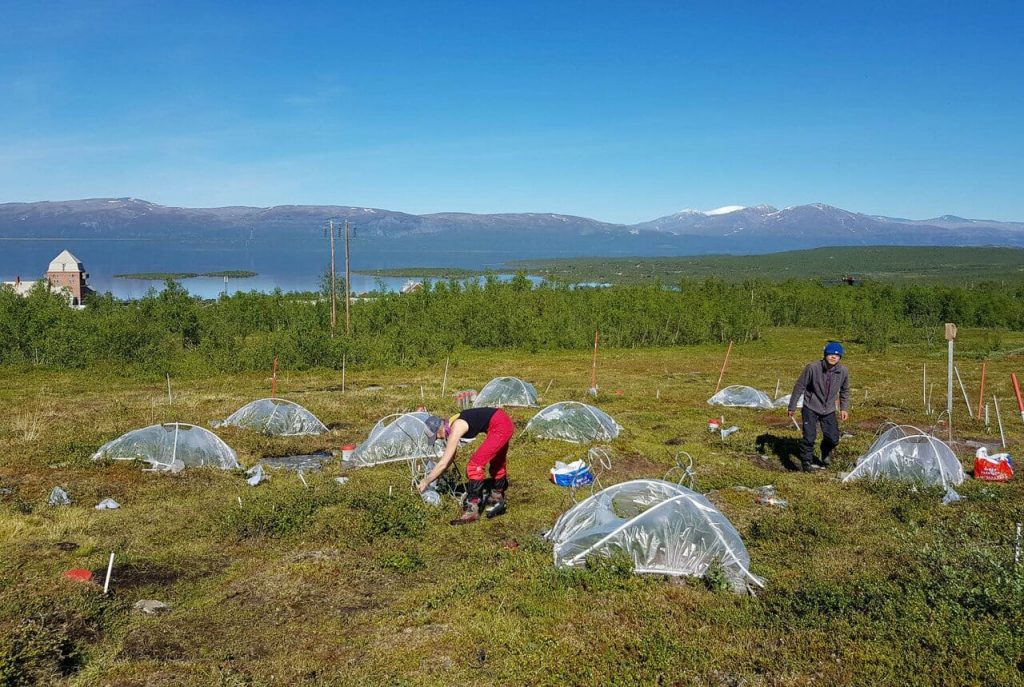Rising temperatures in the Arctic cause plants to release more volatiles; this is bad news for the climate and the plants themselves
Scent compounds – called volatiles – released from plants have many functions and can affect both the activity and interaction of insects and the physical and chemical properties of the atmosphere. A research team led by researchers from the DNRF’s Center for Permafrost (CENPERM) has investigated how climate change and increased insect activity affect the release of volatiles in the atmosphere in the Arctic. The study shows that rising temperatures are the primary cause of a greatly increased release of volatiles, which can have major consequences for climate and plant life. The results have recently been published in the scientific journal Nature Plants.

Increasing temperatures in recent years in the Arctic have caused plants to produce and emit far more volatiles. This can eventually lead to a domino effect with enormous consequences for both climate and plant life in the future, according to research conducted by a research team from the Department of Biology at the University of Copenhagen, led by post-doc Tao Li and Professor Riikka Rinnan, both from the DNRF’s Center for Permafrost (CENPERM).
The researchers have studied the relationship between rising temperatures, increased activity among insects, and the emission of volatiles from plants in the Arctic. The results show that the higher temperatures in the Arctic lead to increased insect activity, causing the vegetation to release more volatiles in an attempt to defend themselves against the insects. The problem is that the volatiles also play a fundamental role in the atmosphere and ecological processes, and they can contribute to increased air pollution.
“On one hand, plant volatiles are an essential part of plant defense. Many are toxic to insects that eat the plants or lay eggs on them. Plants can also attract natural enemies of the attacking insects or warn their neighbors of impending danger by airborne communication cues,” explained Dr. Tao Li, who is the main author of the study. He continued:
“On the other hand, the same plant volatiles can transform atmospheric chemistry. In air, these compounds produce tiny particles, which scatter solar radiation and thus prevent solar heat from reaching the ground and can even form clouds. They also contribute to the formation of ground-level ozone, an air pollutant that harms plants, animals and human health.”
The increased release of plant volatiles in the Arctic can therefore lead to yet unresolved consequences for the chemical composition of the atmosphere.
Rising temperatures cause insects to devour plants
In the study, the researchers also investigated how rising temperatures can affect the interaction between species via the volatiles. The researchers provoked stress-triggered release of plant volatiles in the Arctic in small open-top plastic greenhouses with simulated heating. The experiment showed that 2°C heating increased the insect’s consumption of vegetation by 300%, which, for instance, means that violent insect outbreaks can lead to periodic defoliation.
“To investigate how insect feeding would impact the volatiles released, Tao used a plant hormone that makes the plants believe they are being attacked by insects. This hormone treatment led to a drastic increase in the amount of plant volatiles released by the widespread circumpolar dwarf birch, which is a major player in the ongoing Arctic greening,” said Professor Riikka Rinnan before continuing:
“The mimicked insect feeding caused a large release of chemicals that we know from the smell of freshly mowed lawn and terpenes known also as essential oils. Surprisingly, a 4-fold increase in terpenes rose to a huge 11-fold increase under simulated warming, revealing a strong synergy between warming and insect feeding. This can have far-reaching consequences.”
Thus, the increased release of volatiles due to rising temperatures can trigger a domino effect by leading to more vegetation damage caused by insects, which in turn results in higher emissions of volatiles from the vegetation, resulting in major impacts on volatile-mediated interactions between species as well as on yet-to-be-understood consequences for the atmospheric chemistry.
Find the scientific publication in Nature Plants here
Read more about the study in a press release from University f Copenhagen here
